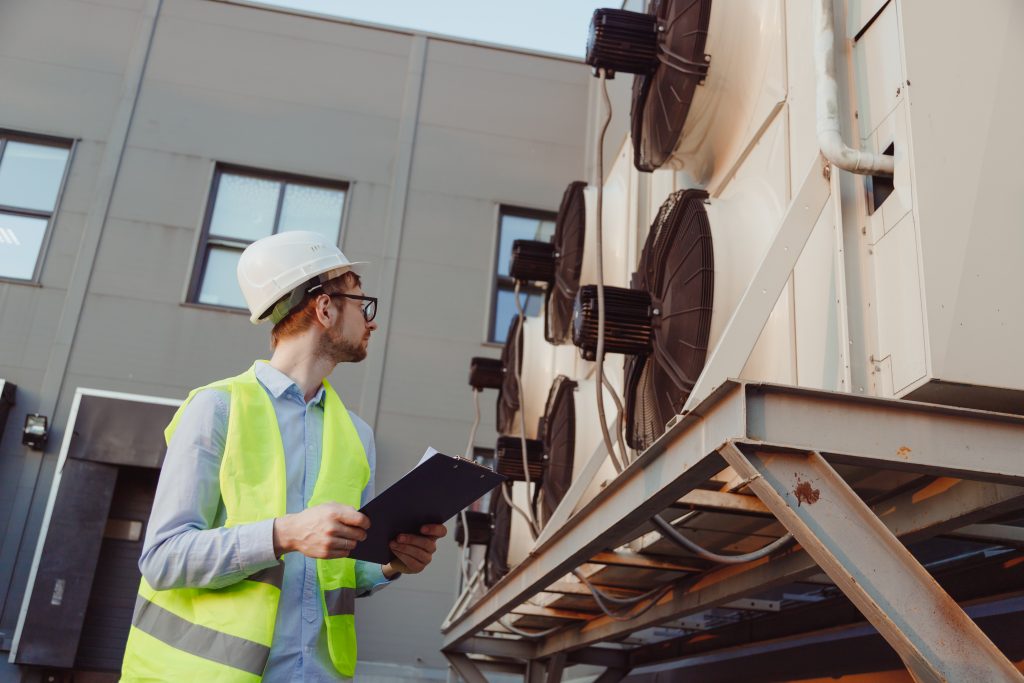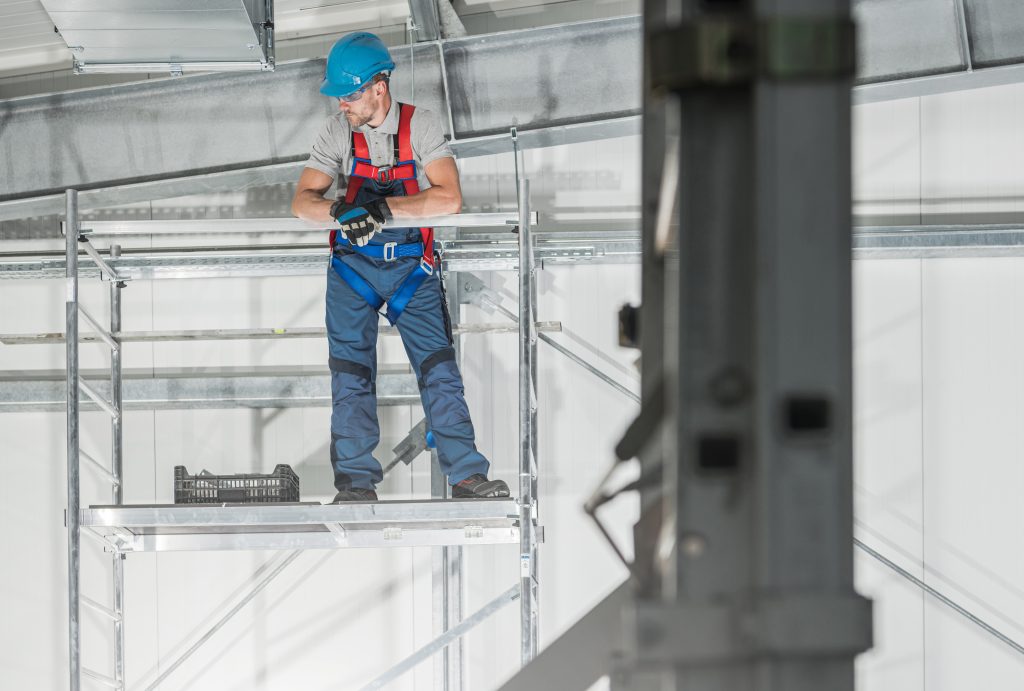Over time, the users of a building may notice that the HVAC system is failing to provide cool air to parts of the building. This might occur because the surface unit is depleted of gas. When this happens, it’s important that a pressure test is carried out in order to locate the precise spot of the gas leak.
This can be a useful process to identify the location and extent of any leakage. While it doesn’t resolve the issue on its own, it’s a crucial step before any repairs can be carried out.
What is the procedure for a HVAC pressure test?
The Building Engineering Services Association (BESA) DW 143 Guide to Good Practice – Ductwork Air Leakage Testing provides allowable leakage rates for low, medium and high-class ductwork systems. High-sensitivity ductwork pressure testing equipment allows for the testing of all ductwork classes.
Tests are performed by dividing the ductwork into manageable test sections. Each of these test sections is then blocked off using reusable blocking materials. Each test section will be placed under pressure as specified in DW143. The results will be calculated and witnessed by the client, ready for signing off. Test documentation will be compiled featuring the test calculations and equipment calibration certificates.
As the pressure inside the ducts reaches a specific level, a measurement of the airflow required to keep the pressure at that level will be taken. The pressure will be easier to maintain in ducts that are well-sealed. The more air that is leaking from the ducts, the more the fan will need to work to push air into them to maintain steady pressure. If a pressure test locates significant leakage at the ducts, further tests will be performed to identify their exact location.
Why does it need to be carried out?

HVAC systems are pressure tested to ensure that they are safe and leak-tight. It helps to ensure that HVAC systems are operating effectively and efficiently, helping to keep running costs in check. They can also identify small issues before they have a chance to develop into bigger problems that may be more costly to rectify.
Pressure testing will identify small issues and leakages that may be imperceptible to the building’s users but which have the potential to develop into further issues.
If leaks develop it’s detrimental to both the efficiency of your HVAC system and the comfort of the building’s users. The money that is being spent on conditioning the air is effectively being thrown away. With rising energy prices this is likely to have severe consequences for businesses. The building won’t stay evenly warm or cool and some parts of the building may be more affected than others, as the air has more chance to escape as it travels longer distances.
It’s clear that low pressure caused by leakages can cause significant problems as the integrity of the HVAC system is one of the means through which efficient operation is maintained. HVAC pressure testing locates and allows for the speedy rectification of any issues or potential issues.
How often is it required to take place?
HVAC pressure testing will usually be carried out as part of an HVAC’s system regular maintenance and testing schedule. It can also be carried out if a problem with the HVAC system is identified by the building’s managers or users. It will also take place during a commissioning, re-commissioning and retro-commissioning process.
The safety and operation of an HVAC system with an effective rated output of more than 12kW are statutorily required to be inspected at least once every five years by an energy assessor. In reality, most commercial HVAC systems will be tested and maintained more regularly.

How ECS can help
ECS provides qualified and experienced engineers to ensure that all aspects of the HVAC system are working safely and efficiently. Our comprehensive HVAC commissioning services takes your installation from a stage of static completion to full working order.
Call 01535 600688 or email info@ecs-commissioning.co.uk to find out more.

